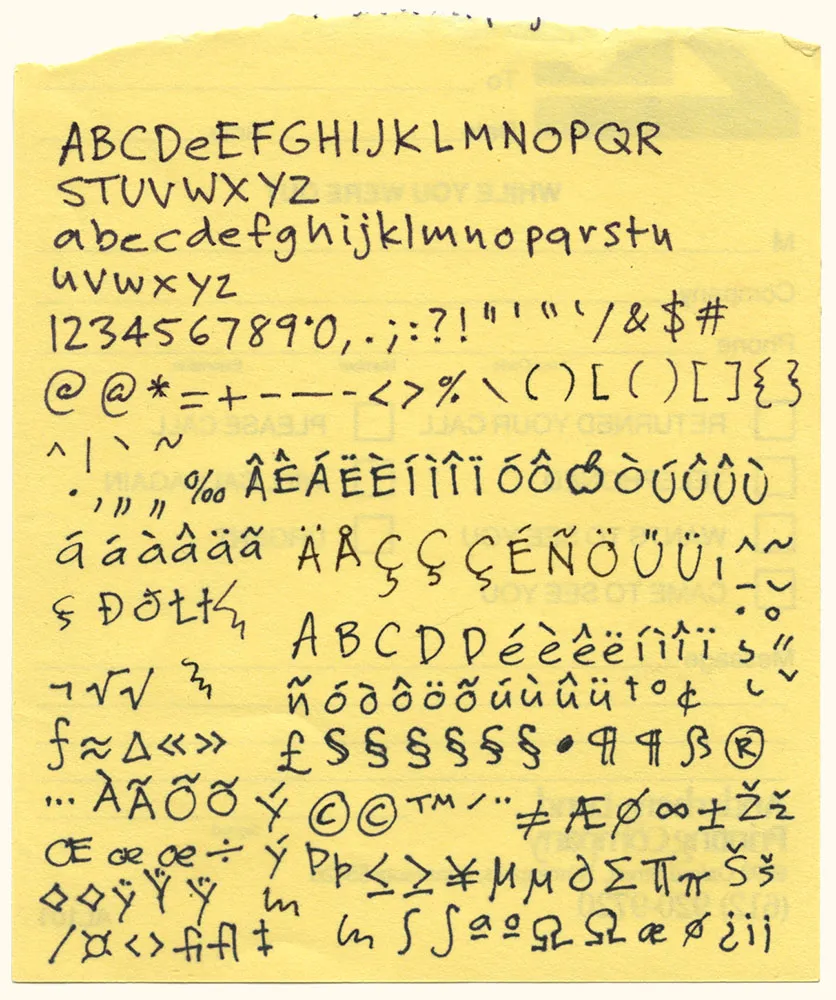
Here it is: The original artwork for one of my most popular fonts, Felt Tip Roman. I scribbled out all the characters needed in a typical font on the back of a phone message pad (about 4.128” x 5”) using a Pilot Razor Point felt pen. I deliberately tried not to be too neat or careful to try to capture the spontaneity of natural handwriting. Whether it would actually work as a font, I had no idea. That it would become a commercially successful font someday would have struck me as absurd at the time. I probably would have been a bit more careful and circumspect if I’d known. But perhaps then it would not have been as popular.

My daughter and her friend asked me to draw a picture of Hello Kitty. For better or worse, I can’t resist playing the fool. We all had a good laugh.
 Lately, I have been watching the first (and only) season of The Jestons on DVD with my 10-year-old daughter. She likes them a lot. I remember many of them from when I was her age, some more than others.
Lately, I have been watching the first (and only) season of The Jestons on DVD with my 10-year-old daughter. She likes them a lot. I remember many of them from when I was her age, some more than others.
As with anything you enjoyed watching as a kid, it isn’t the same watching it as an adult. The stories are pretty dumb (no big surprise), so I’ve mainly been looking at the way they were drawn and animated.
I wanted to be a cartoonist for a while when I was a kid. I spent a lot of time drawing cartoon characters from TV shows, comics, and such. I especially was influenced by the stylized characters of Hanna-Barbera and Jay Ward cartoons.
As I’ve been watching The Jetsons, I’ve been doodling characters, trying to see how they were constructed, how they got them to look they way they looked. The formula they used was pretty simple and efficient (it had to be for a weekly show) and I found myself drawing pretty good likenesses very quickly.
The other thing I did recently was read a book about comic book artist Wally Wood (Against the Grain: Mad Artist Wallace Wood, published by TwoMorrows Publishing). Although most comic book aficionados know him for his science fiction and war comics, I am most familiar with Wood’s drawings in Mad magazine, particularly from the late fifties and early sixties.
My uncle, who is about ten years older than me, was a Mad reader in the fifties. As a kid, I used to go straight to his collection when we’d visit my grandparents. The thing I remember most about them was Wally Wood’s drawings, especially his drawings of jazz-crazed hipsters, with their shiny black shades and goatees.
The story of Wally Wood is a sad one (he took his own life in 1981) but his influence and the beautiful work he produced lives on.
So. What’s Wally Wood got to do with The Jetsons? Nothing at all. But it explains the drawing.
